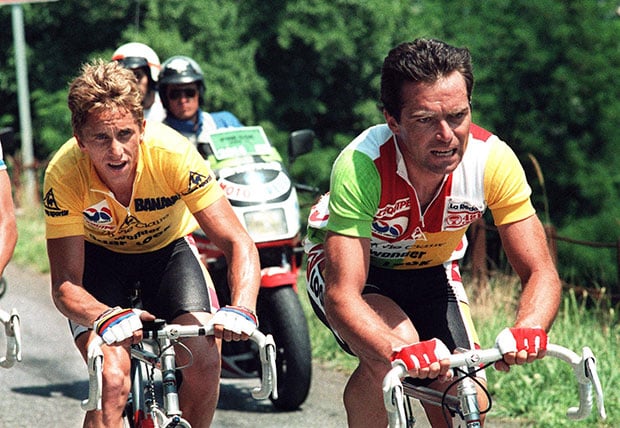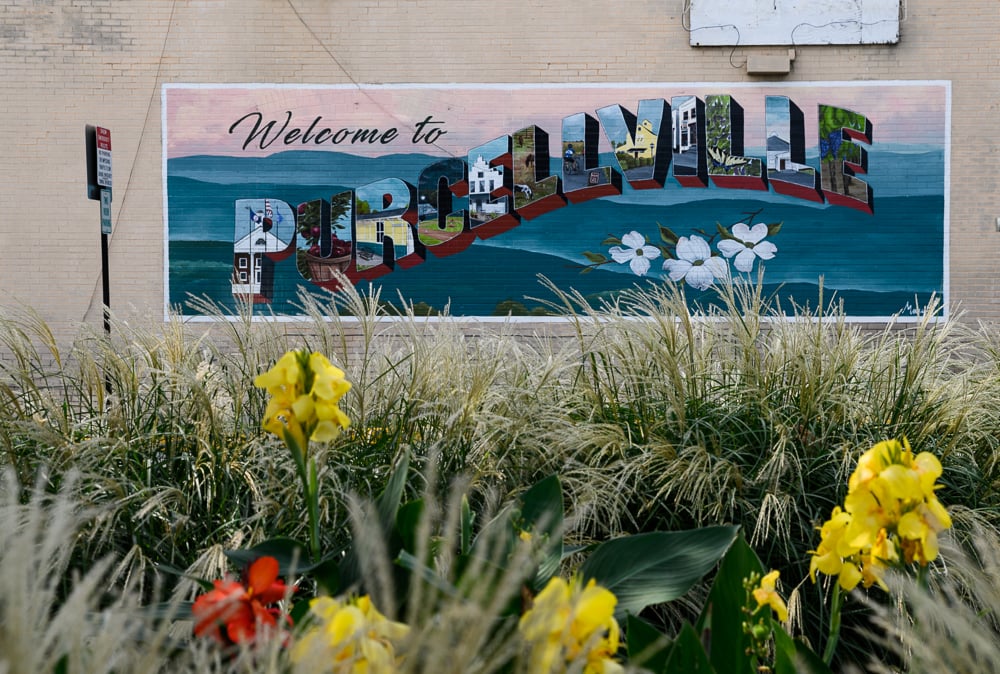American cyclists won every Tour de France from 1999 through 2006—until, of course, they were revealed as drug-fueled frauds. The past few decades of professional cycling have been filled with so many phonies, it’s sometimes difficult to remember there was an era in which riders pedaled across the Alps under their own steam.
Thanks to those phonies, such as Alberto Contador, Floyd Landis, and, of course, Lance Armstrong, we have to go back 30 years to find a cycling story not built on a dubious narrative. And with Landis and Armstrong exposed as cheats, the lone US cyclist to win an honest Tour de France remains Greg LeMond, whose strained friendship and longtime rivalry with the French legend Bernard Hinault is the heart of Slaying the Badger.
LeMond emerged in the late 1970s as one of those phenoms with athletic traits so rare, one forgets he didn’t win his first Tour de France until 1986. LeMond’s levels of speed, endurance, and aerobic capacity had never been seen in any cyclist, much less any Americans, who until LeMond were non-factors in major cycling competitions. Director John Dower retraces LeMond’s emergence, his marriage at 19 to his high-school girlfriend, Kathy, and their youthful move to Europe so LeMond could hone his skills with the real pros.
The action picks up when LeMond falls in with La Vie Claire, a legendary cycling team anchored by Hinault, also known as the “Badger” for his sneering demeanor and hyper-aggressive road moves. (Among the archival footage is the 1984 race between Paris and Nice in which Hinault, encountering protesting shipworkers blocking the route, dismounts from his bike and starts punching the demonstrators.) By 1985, Hinault was looking to join the small group of cyclists with five Tour victories, but at that point, LeMond was hungry for his first. The teammates struck a deal: LeMond would support Hinault in ’85, and Hinault would return the favor in ’86.
At the risk of landing on the Badger’s list of journalists with whom he won’t cooperate: He’s a lying bastard. Hinault barreled through the 1986 Tour seemingly set on winning, culminating in an obnoxious climb of the Alpe d’Huez in which he went into attack mode with no competition to actually attack. LeMond caught him, and even though the pair finished the stage hand in hand, there was no real renewed partnership. In archival footage taken after the legendary stage, Hinault slyly hinted that even though the plan was for LeMond to win, the 25-year-old American could fall ill or get injured.
Hinault’s official explanation for his moves was that he was actually trying to wear down the rest of the field to allow LeMond to emerge on top. It’s a flimsy excuse in the archives, and it doesn’t hold up in a contemporary interview with Hinault. But that was the La Vie Claire way. The team’s coach, Paul Köchli, feels the same. He ordered LeMond to hold back in ’85, only to institute an every-cyclist-for-himself strategy the following year.
LeMond today remembers the rest of the ’86 tour as a survival game, even to the point of only eating food purchased by Kathy or his parents, and hearing rumors that 80 percent of the field was actually backing Hinault. Andrew Hempstead, another American signed to La Vie Claire, compares the LeMond-Hinault partnership to a fratricidal betrayal.
LeMond won in 1986, but even with the titular Badger slain, he faced far greater struggles. A hunting accident in early 1987 kept him out for two years. His second tour win, in 1989, when he took the lead in the final stage is a more improbable victory than the first, and certainly an uplifting story, but not as momentous.
LeMond appears in a body brace in his contemporary scenes, a result of injuries he sustained in a car crash shortly before Dower started filming. Otherwise, he appears to be in fine shape, if a little heavier over the years. But he’s more attuned than ever to his legacy; the remnants of his hunting wounds leave him at greatly elevated risks for stroke and heart disease, and with American cycling in disarray after Armstrong and Landis, LeMond remains unchallenged in his influence on the sport.
Slaying the Badger doesn’t linger on Armstrong, thankfully, but he does bracket the film. LeMond wanted to believe Armstrong, his successor as the great American cyclist and improbable cancer survivor, but couldn’t, given the evidence he knew. Aware that he would be brandished a villain if he bashed Armstrong when the chemically improved Texan won, LeMond recalls his official line was, “It’s unbelievable.”
It was a cagey sentiment, worthy of the Badger himself, but one that makes us long for a less fraudulent era. Hinault might be a duplicitous jerk, but he and LeMond gave us great races honestly.
Screening Saturday, June 21, 11 AM at AFI Silver Theatre, and Sunday, June 22, 4 PM at Goethe-Institut.
Return to AFI Docs page.



















